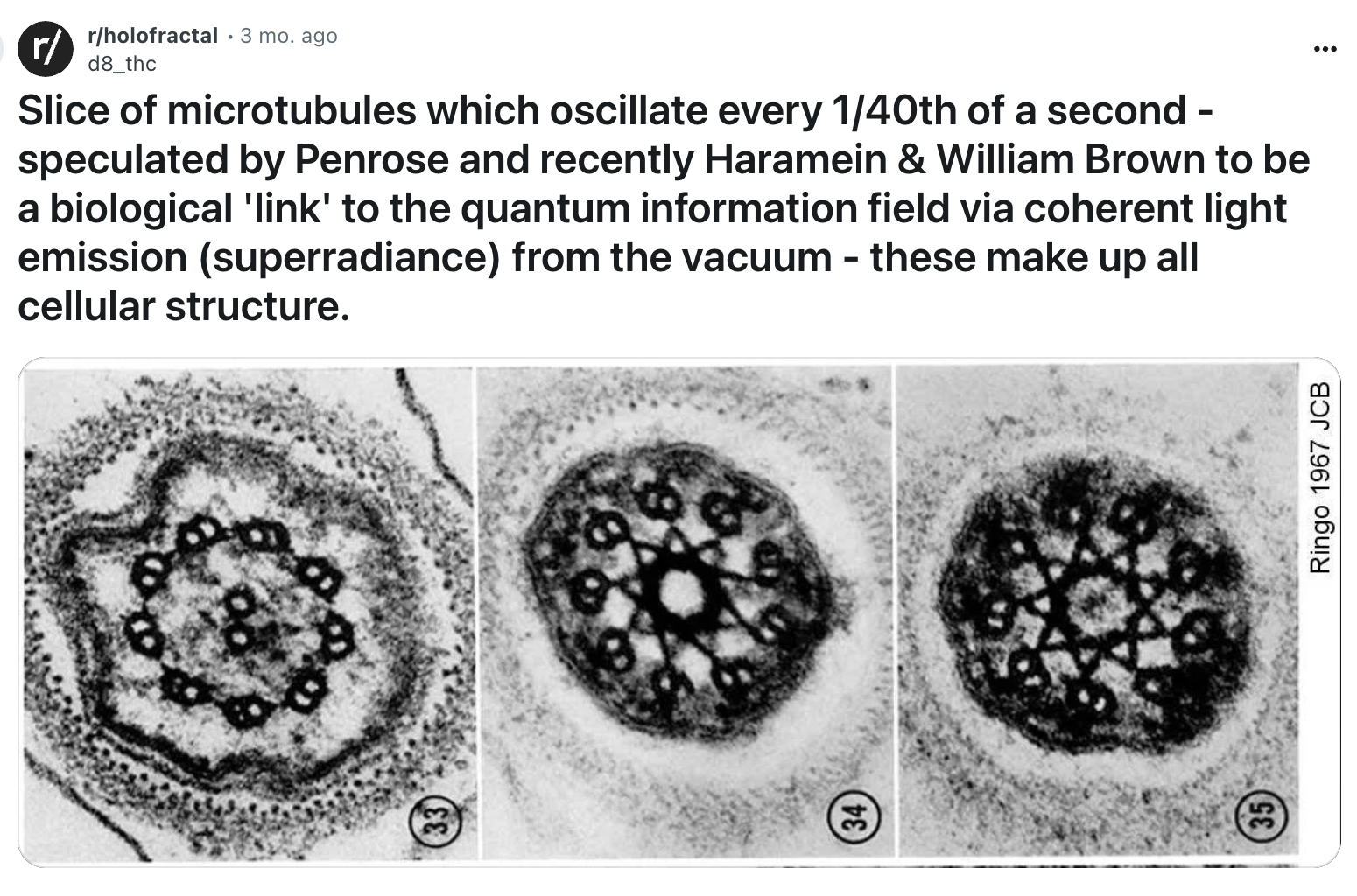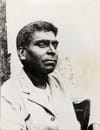Rāsa-līlā = A Blueprint for Microtubules?!

In Kṛṣṇa-saṁhitā, Śrīla Bhaktivinoda Ṭhākura, prolific 19th century author and reformer of Gauḍīya Vaiṣṇavism, draws a profound comparison between the Rāsa-līlā pastime of Śrī Kṛṣṇa and the principle of electromagnetic attraction in particle physics:
"In the world of matter wrought by Māyā, there is one main star that appears to be fixed. Various suns and their planets circle this dhruva-nakṣatra (Pole star), as if by some attractive force inherent to it. The underlying principle to this is that all material subatomic particles share in a force of attraction [electromagnetism]. This energy causes the subatomic particles to be drawn to each other, combine, and form circular, globular shapes, including whole planets, which in turn are drawn to other larger globular bodies and rotate around them. This is the eternal law of the physical world. Māyā, or the material energy that is at the root of the physical world, is but a reflection of the spiritual realm. ...
"In the realm of pure spirit (cit-jagat), all the infinitesimal expressions of consciousness (aṇu-caitanya) are drawn together by their shared eternal nature, which is love (prīti), and together, they follow forms of consciousness that are more powerful than them (unnata-caitanya, or the gopīs). These more advanced forms of consciousness, along with their retinues of minute conscious beings, rotate incessantly around an ultimate fixed point of consciousness (parama-dhruva caitanya), Śrī Kṛṣṇa, in the rāsa-cakra, the rotating disc or circle referred to as the Rāsa. Thus, within Vaikuṇṭha-tattva (the limitless reality that is the spiritual realm), Parama-rāsa-līlā (the supreme Rāsa dance) presides eternally. That rāga-tattva (principle of divine love) that exists eternally in all conscious entities, causing the spread of prīti (love) to stretch up to the point of mahābhāva, reflects into the material realm as a wondrous form of attraction that spreads through the material world, producing plentiful variegation."
—Kṛṣṇa-saṁhitā (5.17–19), Śrīla Bhaktivinoda Ṭhākura
Interestingly enough, a cross-section of the microtubules in eukaryotic cells (and therefore in all humans, animals, plants, algae, etc.) reveal a stunningly maṇḍala-esque structure that has scientists theorizing that these microtubules, which are fundamental to forming the structure, adhesion, and movement of cells, are a biological link to the quantum vacuum, a theorized state of zero-point energy underlying the entirety of the cosmos. See for yourself:

As a follower of the Vaiṣṇava tradition, specifically a worshipper of Kṛṣṇa, and after reading Śrīla Bhaktivinoda Ṭhākura's comparison of particle attraction and planetary orbits to Rāsa-līlā, it is hard to notice the nine-pointed star around a central hub and not think this is an example of the reflection of the realm of spirit into the realm of microbiology. As śṛṅgāra-rasa is considered the ādi, or original, rasa, Rāsa-līlā is considered to be the ultimate līlā, or divine spectacle. Śrīmatī Rādhārāṇī, the embodiment of hlādinī-śaktī, the "pleasure potency" of the divine realm, is accompanied in that Mahā-rāsa-līlā by the eight principal gopīs—Lalitā, Viśākhā, Citrā, Campakalatā, Raṅgā-devī, Sudevī, Indulekhā, and Tuṅgavidyā—who are expansions of Herself. Together they represent the unnata-caitanya referred to above in Ṭhākura Bhaktivinoda's explanation and draw all other smaller iterations of consciousness inward to the central hub of consciousness, saṁvit-śaktī-svarūpa Bhagavān Śrī Kṛṣṇacandra.
śrī rāsa-maṇḍala jaya, jaya rādhā-śyāma |
jaya jaya rāsa-līlā sarva-manorama ||
jaya jayojjvala-rasa sarva-rasa-sāra |
pārakīya-bhāve jāhā vrajete pracāra ||
śrī jāhnavā-pāda-padma kariyā smaraṇa |
dīna kṛṣṇadāsa kahe nāma-saṅkīrtana ||
Is this not the intersection of science and sanātana-dharma? Let me know what you think in the comments below.

